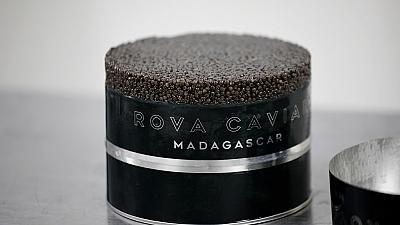Last updated on September 11th, 2021 at 03:23 pm
Madagascar’s cool fresh water and inexpensive labour has inspired the production of the luxurious caviar.
Three French entrepreneurs set up the farm. Today, they produce Rova Caviar with 300 tonnes of fish from 6 different sturgeon species.
Delphyne Dabezies is the CEO of Rova caviar.
“The day we produced the first caviar in Madagascar was a real relief because in the southern hemisphere, as I said, there are few farms. The second point is that no one had tried the experiment before, to produce sturgeons in Madagascar, we could have had a bad caviar, we were not sure. So when we saw that the product was excellent and that Malagasy terroir really managed to transmit this level of excellence into the product, it was a great relief”, Dabezies said.
“ I’m working on something that is unique in Madagascar but also in Africa, I’m very proud. ”
Acipenser employs between 250 and 300 locals, depending on the season. It produced its first batch in 2017. Lalaina Ravelomanana, head chef at Marais, a glitzy rooftop restaurant in Madagascar’s capital Antananarivo, is a close friend of Delphyne Dabezies and her partners. He takes great pride in serving local caviar.
“What’s particular with this caviar it is very subtle in the mouth, buttery, and it will combine well with products from Madagascar like seafood”, Ravelomanana said.
Locals are thrilled to work in the caviar industry.
“When I finished studying I didn’t think I would work in the caviar industry, at best I thought I would work with shrimps or flagship products from Madagascar and now I’m working on something that is unique in Madagascar but also in Africa, I’m very proud”, Acipenser Assistant cage site manager, Aina Rakotoarimalala said.
Caviar sells for up to $780 per kilo in plush French restaurants. According to Indian-based business analytics and consulting firm, Adroit Market Research, the global caviar market is projected to grow at 7% per year to around $560 million by 2025.
Reuters

